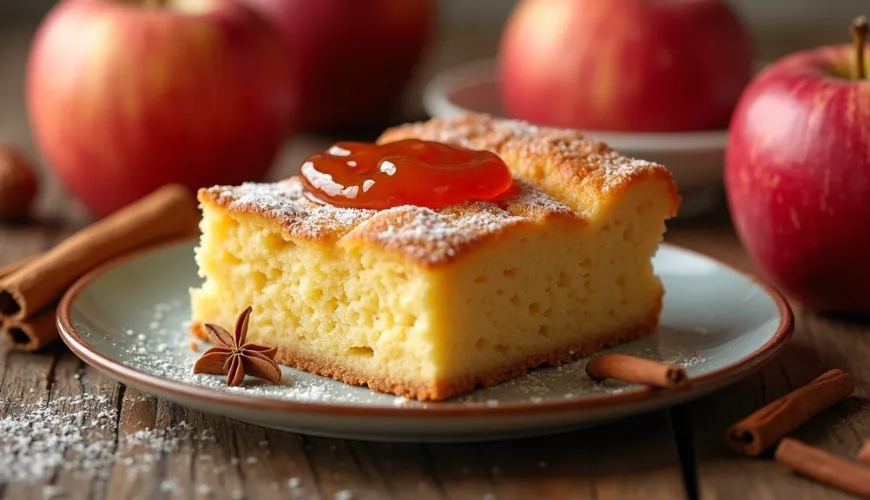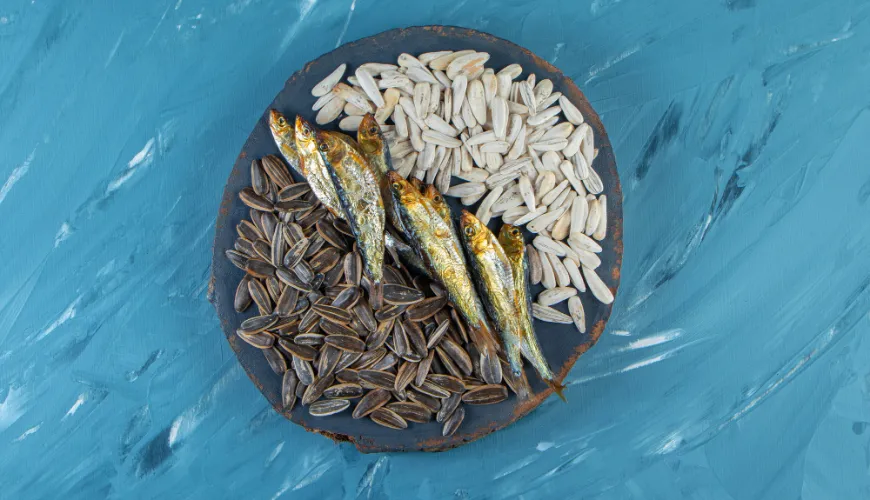
Sheet Pan Gingerbread Cake That Will Delight Both Children and Adults

Poured Gingerbread - A Forgotten Gem of Czech Cuisine That Smells Like Home
Few cakes evoke childhood memories as strongly as gingerbread. And despite the modern pastries with shiny glazes and exotic ingredients competing on store shelves, classic poured gingerbread still holds a firm place in the kitchens of those who value simplicity, taste, and honesty. Its preparation is so easy that it often ranks among the first recipes children learn from their grandmothers – perhaps that's why it remains forever associated with the feeling of home.
Gingerbread has a long and rich history in Czech tradition. Its spicy aroma and dark color were once a symbol of uniqueness – it used to be made from expensive ingredients like honey, cloves, or cinnamon, which were luxurious goods. Today, these ingredients are readily available, so moist poured gingerbread can be enjoyed by everyone – whether just with coffee or as a nutritious snack for children.
When Speed Matters - The Magic of Cup Gingerbread
How often does it happen that a visitor suddenly announces themselves or a craving for something sweet hits at home? That's when poured cup gingerbread comes into play, one of the most practical recipes in Czech cuisine. It doesn’t require scales or complicated procedures – just an ordinary cup and a few basic ingredients most of us have at home: flour, milk, eggs, sugar, oil, and of course gingerbread spices.
The mixture is simply stirred, poured onto a baking sheet, and in half an hour, it’s done. The result is a soft, fragrant gingerbread that can be complemented with nuts, raisins, or jam according to taste. Some cooks even recommend adding a spoonful of honey or cocoa to the batter, giving it a more pronounced taste and richer color.
A reader of a popular culinary blog describes how poured gingerbread saved her afternoon: "I had three restless kids at home, the fridge was empty, and it was pouring outside. I remembered my grandmother's recipe – within half an hour it was baked and the kitchen smelled like Christmas."
Apples as a Secret Ingredient - Moist Poured Gingerbread with Fruit
A special chapter is poured gingerbread with apples – a variant that not only excels in moistness but also combines the flavors of traditional spices with the freshness of fruit. Grated apples add juiciness and natural sweetness to the gingerbread, making it easy to reduce the amount of sugar. This is especially appreciated by those trying to eat healthier or preparing the cake for children.
The advantage of apple gingerbread is its versatility. It can be prepared entirely without eggs, with plant-based milk, and part of the flour can be replaced with whole grain – ideal for vegans or people with intolerances. The resulting texture is still airy and moist, as if you just pulled the freshest cake from the bakery.
In fact, it's not just a presumption. According to nutritionist Margit Slimáková, the combination of whole grain flour, fruit, and natural sweetener is one of the best ways to enjoy sweetness without guilt. So if you're looking for a connection between health and tradition, poured gingerbread with apples hits the mark.
Poured Gingerbread on a Tray - A Recipe to Feed the Whole Family
When it comes to practicality, poured gingerbread on a tray has no competition. It's the ideal choice for large families, school events, or as a cake for a picnic. It cuts well, is easy to carry, and remains moist for several days – if no one finishes it by then.
For an even richer flavor, it's recommended to spread the surface of the gingerbread with homemade jam, sprinkle with nuts, or drizzle with chocolate glaze. Yet it remains a simple, honest cake that doesn’t lose any of its appeal. Perhaps that is its charm – at a time when baked goods are becoming increasingly sophisticated, returning to simplicity is the greatest luxury.
A certain kindergarten teacher recalled how she baked poured gingerbread on a tray for her students every month: "The kids always asked for it. Not cakes, not muffins – gingerbread. The smell of cinnamon and cocoa wafted through the whole classroom, and suddenly everyone felt good."
Gingerbread as Part of Sustainable Cooking
In a time when more and more people are trying to live ecologically and sustainably, poured gingerbread is surprisingly relevant. Not only is it simple to prepare, but its ingredients often come from local sources. Flour from Czech grain, eggs from home farms, apples from the garden or orchard – these are all ingredients that don't burden the planet and at the same time bring genuine quality.
Moreover, it is a dessert that allows for minimal waste. Leftover apples that are no longer fresh? Perfect for the batter. A bit of sour cream nearing its expiration date? Great for softening. Last year’s old jam? Ideal as a topping. Poured gingerbread is therefore not only traditional but also practical and responsible.
Interestingly, many modern food bloggers are beginning to rediscover the charm of this recipe – and bringing it into the present in the form of gluten-free, vegan, or low-carb variants. This only confirms that a quality foundation stands the test of time, even in the 21st century.
One Recipe, a Thousand Variations
Perhaps the enduring popularity of poured gingerbread lies in its versatility. Unlike complex cakes or pastries, it is open to improvisation and adaptation. You can make it with or without honey, with milk or plant-based drink, with or without eggs – and it will always taste great. Whether you choose the basic poured cup gingerbread, opt for moist gingerbread with apples, or bake it as poured gingerbread on a tray for the whole family, the result will always be honest, authentic, and homey.
When the house is filled with the scent of cinnamon, star anise, and honey, it's clear that something special is baking. Something that connects generations and awakens memories. Poured gingerbread is not just a cake – it is tradition, the taste of home, and a small proof that there is beauty in simplicity.

